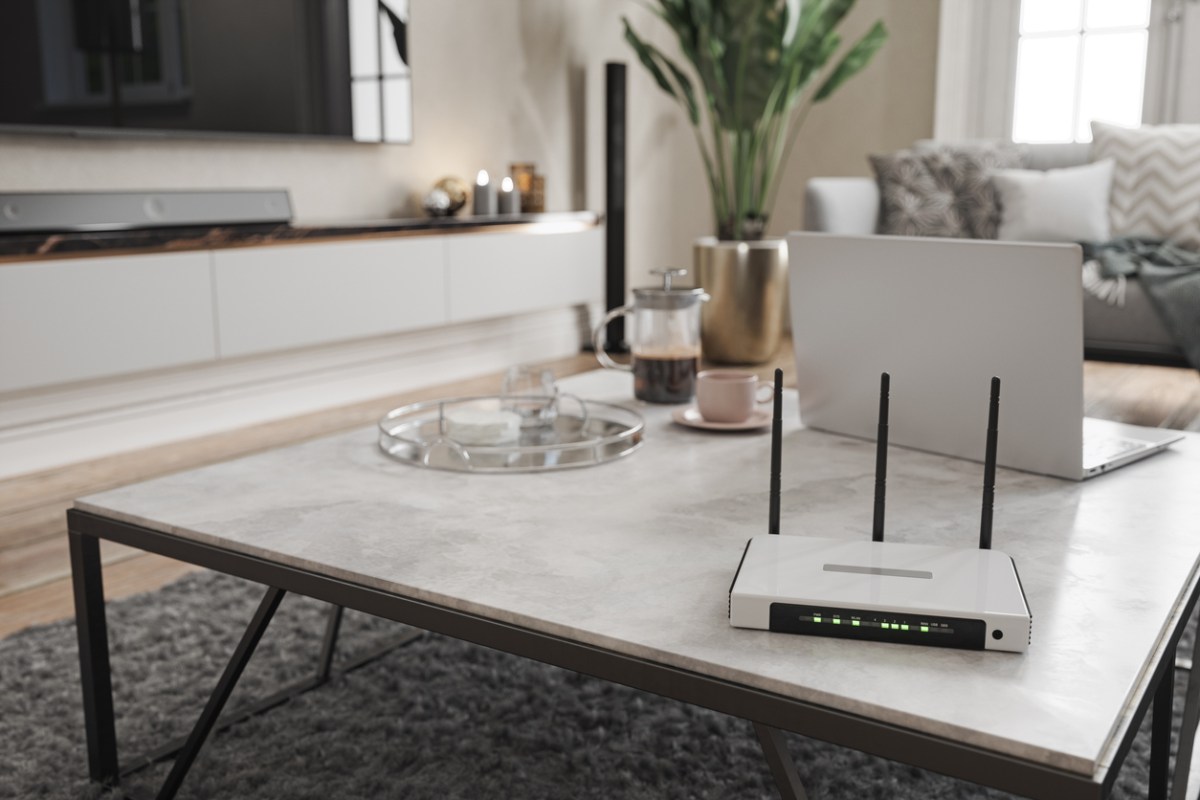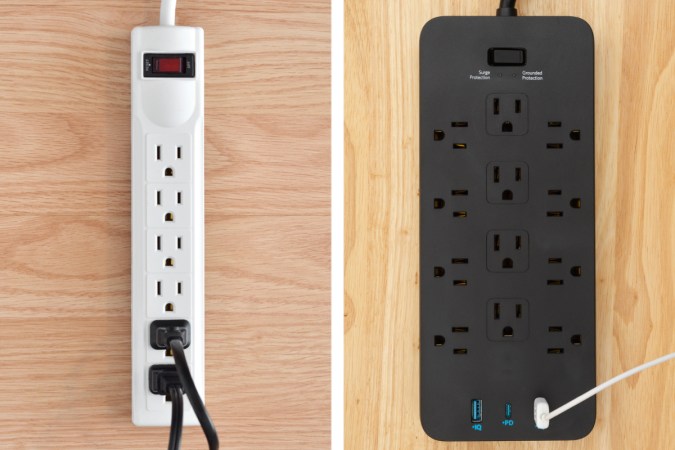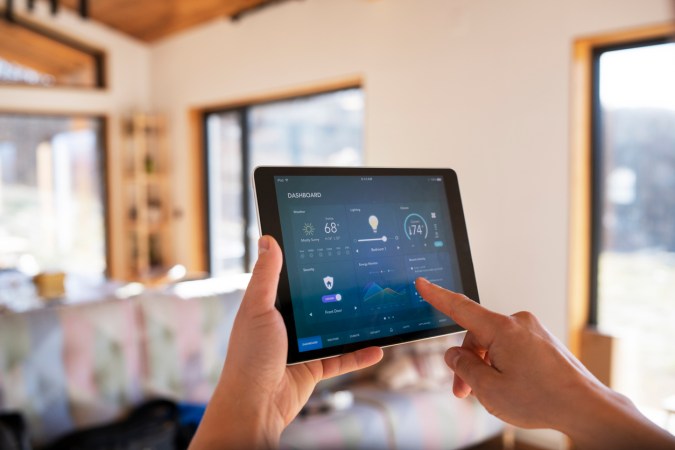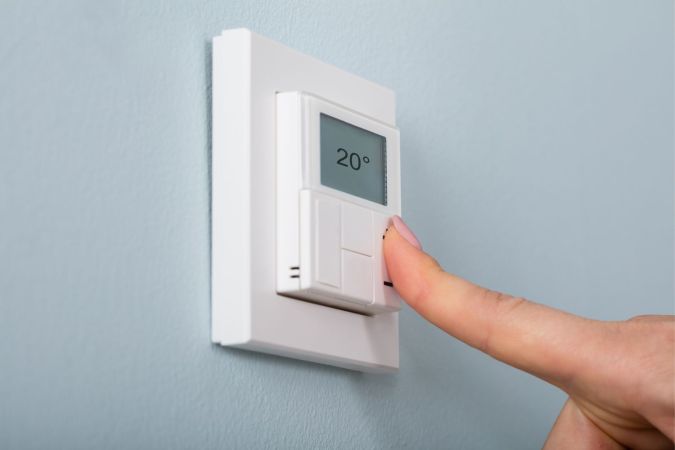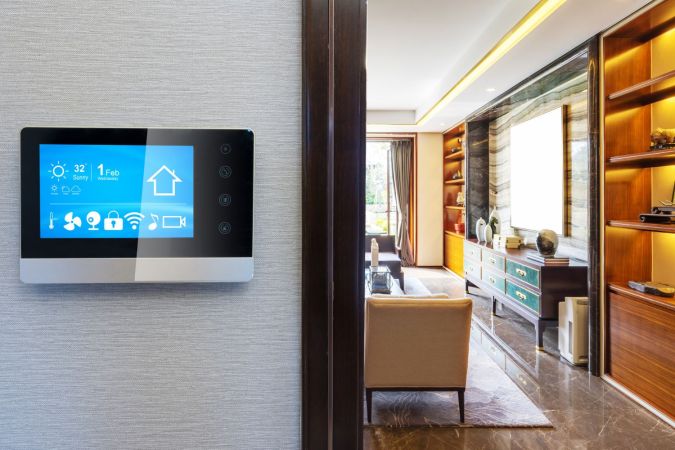We may earn revenue from the products available on this page and participate in affiliate programs. Learn More ›
At this point, many folks have had internet in their homes for decades. In that time, they’ve been using modems and routers for internet access because, well, they have to. But many don’t really know what these devices do, even occasionally using the terms interchangeably. All we know is that they somehow magically connect us to the internet, but what is the difference between a modem and a router?
It’s not magic and there is a difference between these devices, and this modem vs. router guide will explain what those differences are.
What is a modem?
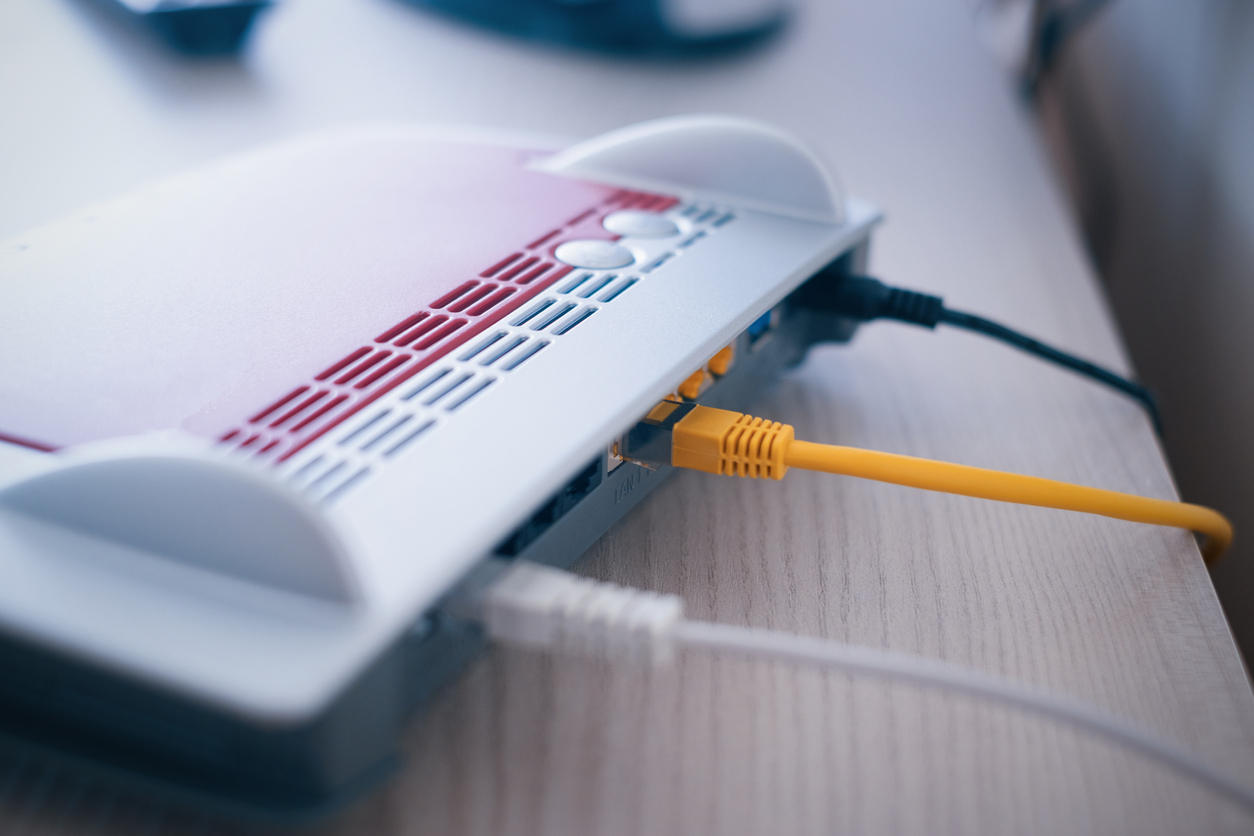
A modem is a device that provides a home with access to the internet. This device takes digital signals and converts or translates them into signals that a computing device like a desktop, laptop, or smartphone can use and understand.
There are three common types of modems: dial-up, DSL, and cable:
- A dial-up device connects to a home’s phone line, and these were some of the first modems invented. Their technology is outdated and they’re pretty much obsolete, though some internet service providers still offer dial-up service.
- DSL (digital subscriber line) also uses a phone line, but these modems offer much faster connection speeds than dial-up.
- Cable connections use a coaxial cable (the type that screws into the back of a TV set, with a single wire protruding from the center of the cable). These modems are very common and offer more speed than DSL.
There are other modem types, as well, such as fiber optic. However, they’re not nearly as common as DSL and cable.
Modems have just a few ports for wires. The WAN (wide area network) port is for the cable coming from the internet service provider (also called an ISP), while the other port connects the modem to the router or electronic device. The ports that connect devices accept ethernet cables, which is a type of cable designed to carry broadband signals between internet-capable devices.
In many cases, an internet service provider will rent a modem to their customers. The customer pays monthly for the device, but it’s covered under a service contract and upgrades may be free at certain intervals.
Alternatively, internet customers can purchase their own modem and skip the monthly fee. This allows users to update their modem whenever they’d like and save money.
Our Recommendation: Motorola MB7621 Cable Modem
The Motorola MB7621 Cable Modem pairs with any router, works with cable plans up to 900 Mbps, and is compatible with Comcast Xfinity, Cox, and Spectrum.
What is a router?

A router is a device that takes the signal a modem provides and distributes it to multiple devices. For instance, a standard modem can only connect to one device, such as a computer, and it will do so with a cable stretching from the computer to the modem. A router attaches to the modem in the same manner (with a cable), but allows multiple devices to access the internet by creating a local area network, also known as an LAN. Some ISPs rent routers, but more typically customers must purchase their own.
There are two different types of routers: wired or wireless. The distinction is how devices connect to the router, not how the router connects to the modem. All routers must connect to a modem with an ethernet cable, so don’t expect a wireless router to simply work on its own.
Wired routers have multiple ethernet ports in the back, and users can run cables from these ports to their devices. For instance, to connect a TV, computer, and game console, they’d have to run three separate cables plugged into three separate ports behind the router. While this is inconvenient, high-quality cables and wired routers can produce fast, uninterrupted speeds with very little fluctuation.
Wireless routers also have a few ethernet ports, but their main function is to connect to devices wirelessly. This includes devices like phones, laptops, and tablets, but also can include TVs, game consoles, security systems, digital voice assistants, and smart-enabled bulbs, switches, and door locks. They also prevent the need to hide cables, which can be difficult and detract from a home’s design.
Routers also help increase the home network’s security. Routers can act as firewalls to prevent outside attacks and security hacks. They can also prevent cyber criminals from accessing the data sent back and forth between the router and the connected devices. It’s important not to overlook this ability, as a data breach, even just within a simple family home, can lead to disastrous results.
Our Recommendation: TP-Link AX1800 WiFi 6 Router
TP-Link’s AX1800 provides speeds up to 1.8 GBps, offers wifi and 4 wired LAN connections, and it can handle up to 40 devices.
RELATED: 13 Ways to Boost Your WiFi Signal at Home
What is a modem router combo?
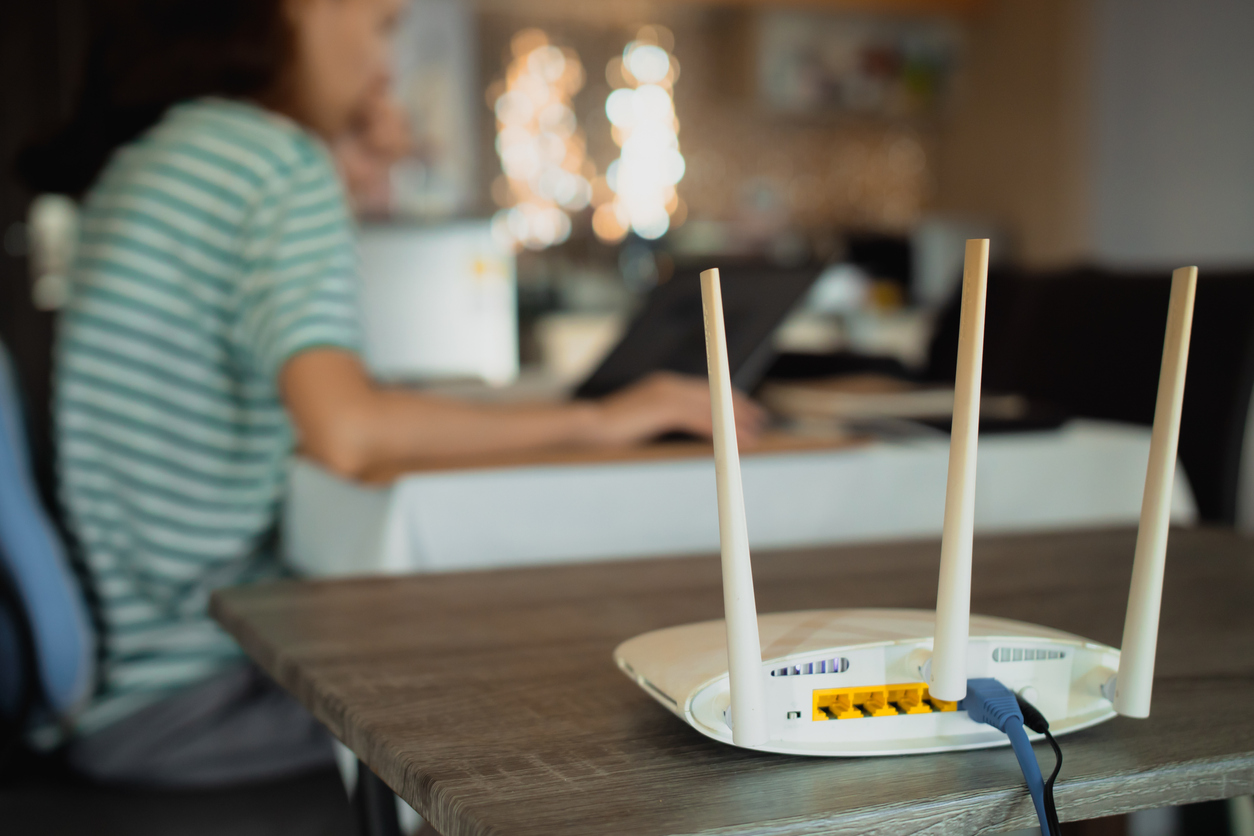
While most homes need the functions of both a modem and a router, it doesn’t necessarily mean they need two separate devices. There are modem-router combos that allow users to access the internet and spread it out to several devices within the home, all from one device. These devices are commonly called gateways, and they can be the right solution for many folks.
Using a modem router combo can save a homeowner quite a bit of money. Rather than renting or purchasing a modem and a router, they can make one purchase that covers both. Also, since everything is wrapped up into one device, gateways are typically less time-consuming to set up.
However, there are downsides to gateways. They’re typically a bit slower than separate devices, and their signal is often weaker. Also, they rarely allow for much customization, while separate devices allow for customizable parental controls and the ability to throttle access to different users and devices.
Our Recommendation: Arris Surfboard G34 DOCSIS 3.1 Gigabit Cable Modem & Wi-Fi
Arris’s Surfboard G34 works with cable internet plans up to 1GBps, features four 1GB ethernet ports, and provides WiFi signal for homes as large as 2500 square feet.
In a modern home, both technologies are necessary.
There really isn’t a WiFi modem vs. router debate. They’re both necessary for most homes.
There may be situations where a simple modem would do the trick. Folks who don’t use a smart phone, for example, and simply rely on the internet connection to their computer, don’t need a router. But, to truly take advantage of everything modern technology has to offer, both technologies are necessary.
A router without a modem is a paperweight, but a modem without a router is a log jam in today’s world. Having to switch an ethernet cable from the TV to the computer to the game console is a pain, and it’s this siloed frustration that makes routers so necessary. Add in wireless connectivity, and a router can handle dozens of devices, whereas a modem (regardless of its speed) can handle just one.
A mesh WiFi system can level up a home’s network.
There are additional types of devices or systems that shoppers should consider. For folks who need a fully connected home with strong signal regardless of where they are, a WiFi extender may be helpful. These devices can amplify the WiFi signal to provide a device with strong uninterrupted service from further away from the router that would otherwise be possible. But, a mesh system can do even better.
A mesh WiFi system is even more powerful than a WiFi extender. These systems take the place of a standard router (mesh systems include their own mesh routers), and transfer signal to modular nodes. Each node receives and sends data, allowing the user to increase their WiFi signal’s range. If the range isn’t reaching far enough, they can add more nodes. These systems are ideal for large properties with several buildings that require internet signal.
5 Tips for Finding the Best Internet Setup for Your Home

Choosing the best internet setup for a home comes down to several factors, and the answers are relative to each home’s needs and wants. However, the following are some of the most important tips or points to consider when making an internet modem vs. router decision.
- Folks who only use a desktop computer for internet access should consider purchasing a modem only. This will provide internet access but they won’t have to pay extra for features they won’t use, such as extra ethernet ports or wireless capability.
- For homes that include several smart devices, tablets, and gaming systems, but the users aren’t so tech-savvy, a gateway combo system is best. They’re easier to set up, and the extra speed and features of a separate system aren’t necessary.
- For people who work at home, streamers, content creators, and other professions who rely heavily on internet access, it’s important to go with separate devices. Modem technology is rather stagnant, but router companies are constantly trying to outdo each other, and upgrading a router frequently without paying for a modem is more cost effective.
- For larger homes, place the router (and modem for convenience) in a central location to ensure that signal is available throughout. If the signal is weak or unstable, consider installing a WiFi extender to improve the LAN system’s reach.
- When internet service is necessary in outbuildings on large property like garages, standalone studios, workshops, and offices, a mesh WiFi system is best. Coupled with a modem, these systems allow users to add nodes that will continue to expand the system’s reach and coverage.
RELATED: Solved! What is a Smart Plug?

